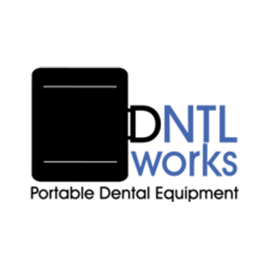
FAQs and Troubleshooting for Mobile Dental Equipment
Share
Mobile dental equipment allows dental professionals to provide care in a variety of settings, from community health centers to outreach programs and remote clinics. However, using portable equipment comes with unique challenges. In this post, we’ll answer common questions and provide troubleshooting tips to help you maintain and get the most out of your mobile dental units.
1. General FAQs for Mobile Dental Equipment
Q1: How often should I perform maintenance on my mobile dental unit?
A: Maintenance schedules vary by unit, but most mobile dental units require daily, weekly, and monthly maintenance tasks. Regular maintenance keeps the unit operating efficiently and prolongs its lifespan.
Q2: What is the best way to transport my mobile dental unit?
A: Always use the built-in handles and locking casters for safe transport. For units with padded handles, avoid stacking heavy items on top to prevent damage. When moving over long distances, lock all components and secure the unit to minimize movement and wear.
Q3: What features should I look for in a portable dental unit?
A: Key features to look for include strong suction power, quiet operation, self-contained water and waste systems, durable materials, and easy-to-navigate control panels. Portability is also crucial, so consider units with lightweight designs, locking casters, and side maneuvering handles.
2. Troubleshooting Common Issues
Even the best portable dental equipment may experience occasional issues. Below are some common troubleshooting tips to help resolve issues quickly and get back to patient care.
Table: Common Issues and Solutions
| Issue | Possible Cause | Solution |
|---|---|---|
| Weak Suction | Clogged vacuum lines or full waste container | Check and empty the waste container, then flush the vacuum lines to clear any blockages. |
| No Water Flow | Low water levels or blocked water line | Refill the water reservoir and inspect the lines for any blockages or kinks. |
| Loud Noise During Operation | Loose components or uncleaned filters | Ensure all components are securely attached and clean or replace filters if needed. |
| Control Panel Not Responding | Disconnected power or system error | Check power connections and, if unresolved, reset the control panel according to the user manual. |
3. Troubleshooting Weak Suction
If you’re experiencing weak suction with your mobile dental unit, there could be several causes. Here’s a step-by-step guide to troubleshooting this issue:
Visual Aid: Step-by-Step Troubleshooting for Weak Suction
Takeaway: Following these steps sequentially can help you identify and resolve weak suction issues effectively. Remember to perform these checks regularly to ensure optimal suction strength.
- Check the Waste Container: A full waste container can reduce suction power. Empty the container and ensure it is securely reattached.
- Inspect the Vacuum Lines: Clogged lines are a common cause of weak suction. Flush the vacuum lines regularly to prevent buildup and ensure consistent suction.
- Check the Filters: Some units include filters that need regular cleaning. Dirty filters can block airflow and weaken suction. Clean or replace filters as per the manufacturer’s guidelines.
- Examine the Seal: Ensure that all seals on the waste container and vacuum lines are secure. A loose seal can cause air leaks, reducing suction effectiveness.
Step-by-Step Troubleshooting for Weak Suction Takeaway: Regularly cleaning and maintaining the waste container, vacuum lines, filters, and seals can prevent most suction issues and keep your unit operating efficiently.
4. Preventive Maintenance Tips
To keep your mobile dental unit in top shape, follow these preventive maintenance tips:
- Daily: Clean the handpiece lines, air/water syringe, and wipe down the control panel.
- Weekly: Inspect water levels, empty the waste container, and check the air filter for dust or debris.
- Monthly: Flush vacuum lines, clean the filters, and inspect hoses and seals for wear.
Table: Maintenance Schedule
| Task | Frequency |
|---|---|
| Clean handpiece lines and air/water syringe | Daily |
| Inspect water levels and empty waste container | Weekly |
| Flush vacuum lines | Monthly |
| Inspect hoses, seals, and filters | Monthly |
Insight: Regular maintenance is key to extending the life of your unit and preventing costly repairs. Following a set maintenance schedule keeps your equipment reliable and ready for patient care.
5. When to Contact Technical Support
If you encounter persistent issues that you cannot resolve with basic troubleshooting, it may be time to contact technical support. Here’s when you should seek professional help:
- Unresolved Suction Issues: If suction remains weak despite following troubleshooting steps.
- Repeated Power Failures: Continuous power issues may indicate internal electrical problems.
- Unusual Noises or Vibrations: Unusual sounds or vibrations during operation can signal mechanical issues that require attention.
- Control Panel Malfunctions: Persistent unresponsiveness in the control panel may need professional diagnosis.
Takeaway: For any major or unresolved issues, reach out to your equipment provider’s technical support team for assistance to avoid further complications.
Conclusion
Keeping your mobile dental equipment in top working order requires regular maintenance, troubleshooting, and knowing when to seek help. By following these guidelines, you can ensure that your equipment remains reliable and effective, providing quality care in any setting. Bookmark this post as a handy reference for maintaining and troubleshooting your mobile dental units!
Have additional questions? Reach out to our team for expert advice on maintaining your mobile dental equipment.
